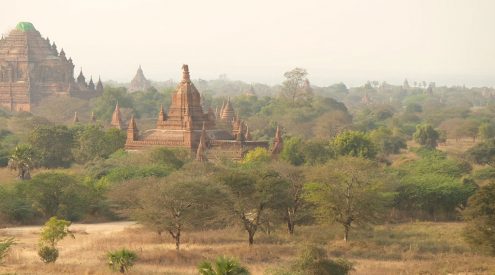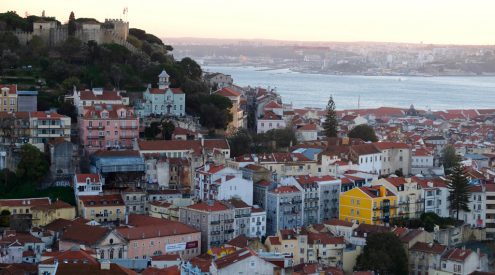Our four days of bundu bashing began in the remote ‘jungle gateway’ town of Rurrenabaque, in northwest Bolivia. After doing ‘the hardy traveller thing’ and enduring the notoriously hair-raising, 20-hour bus journey from La Paz (needless to say we ended up taking a flight back), we found ourselves in the clammy, tropical heat of ‘Rurre’. An interesting town, perched on the edge of the Rio Beni, streets buzzing with overloaded motorbikes, and geared to the nines with every jungle tourist gizmo you can think of: rain ponchos, mozzie repellent, zip-off cargos, waterproof cameras, you name it.
Here, we took our pick from the numerous agencies offering jungle tours and settled on Mashaquipe, an indigenously-run, eco-friendly setup that offered reasonable rates and the rustic camping option that we were looking for.
The next morning we found ourselves chugging up the bubbling brown Rio Beni in a narrow, wooden river dugout. Our destination – Parque Nacional Madidi, an 18,958 square-kilometre region established in 1995 to protect Bolivia´s upper Amazon river basin.
After crossing into the park and a couple of hours of snaking upstream, a steep climb up the river bank led us to a rustic collection of thatched cabins beneath the trees – Mashaquipe Camp. With nothing but rainforest in every direction, the air was thick with moisture, and quiet but for the incessant buzz of cicadas and the occasional very tropical-sounding bird call. It wasn´t long before we found ourselves horizontal in the camp hammocks.
Our stint with Mashaquipe was made up of a night at the Mashaquipe Camp followed by a three-day trekking tour into ´la selva´(the jungle) where we camped for two nights under mosquito nets and little else. It was incredible to be in such thick rainforest, and just walking through the vegetation was fascinating for us, not to mention our guide Alsides’ vast knowledge of jungle plants, animals and insects. Having been born and raised in one of the local Tacana communities near Rurre, what he knew about the rainforest was hugely extensive, and refreshingly genuine. Often, we would be crunching our way through the undergrowth when he would spot a plant and erupt into a spontaneous description of its significance and uses.
We made bright purple dye by rubbing some very ordinary-looking leaves together in our palms, looked nervously upon some of the biggest ants we have ever seen (20 hours of pain after a bite!), felt the spiky graze of a heavily-thorned palm root (used for grating), strained our necks to see the emerald green ´lorro´parakeet high in the forest canopy, came across magic mushrooms of all shapes and sizes, and galavanted through the undergrowth after a group of grunting ‘chanchos’ (wild pigs).
Considering our dependence on conventional modern medicine, it was incredible to see how indigenous communities like the Tacana and Quechua live. Alsides pointed out, among plenty of other things, a tree used by the local women as a natural means of contraception (so strong, according to him, that a full glass depletes fertilitily altogether), tree bark which serves as a soothing tea for diarrhoea and Denghe Fever, the wild ‘ajo-ajo’ – which smells uncannily like the garlic in our veggie draws at home – used for cooking and insect repellent, and a rotting palm tree stump filled with larvae, which when fried, produces oil.
Alsides’ finely-tuned ear for the wildlife of ‘la selva’ meant that, on numerous occasions, we found ourselves charging through the jungle, con machete, in search of howler or spider monkeys, birds, or wild pigs. Nothing like a day of beating through the bush to satiate the inner intrepid jungle pioneer in all of us!
After dinner each night, we walked through the forest by torch light and caught the reflecting eyes of hundreds of spiders (including a rather large tarantula in our thatched roof on the first night), as well as a perfectly-orchestrated team of leaf-cutter ants. When we turned the torches off, the bush was alive with fireflies, and on one night, we sat in the darkness while a jaguar called only sixty meters away.
Our last morning was spent drifting slowly down the Rio Tuichi on a simple raft which we built with homemade rope and wood from the balsa tree. On one side of us was a dense wall of twisted and tangled rainforest, and on the other, a high cliff where, just the day before, we had sat and looked over the forest canopy as a flock of macaws swooped in and out of view. As we bobbed along with our feet in the water, I couldn’t quite believe our luck at having been able to bundu bash through this incredible part of the world.


















